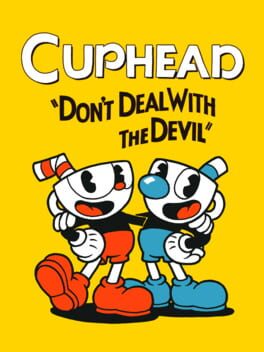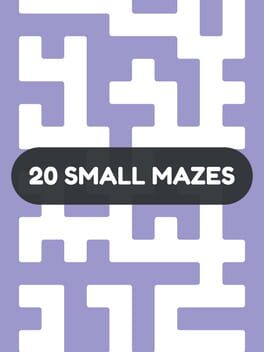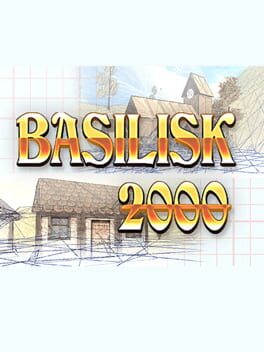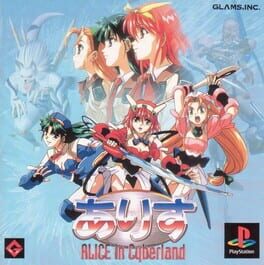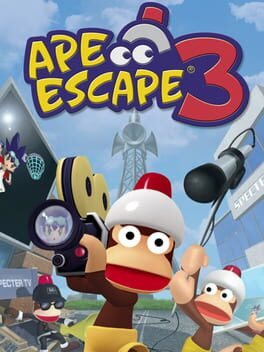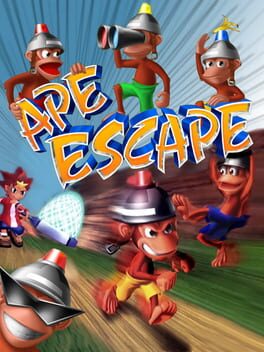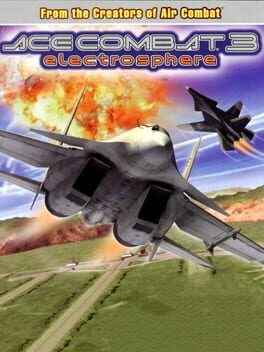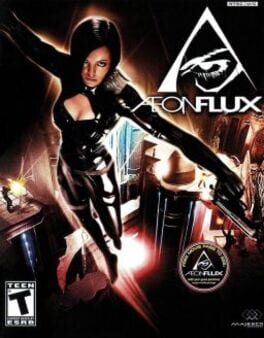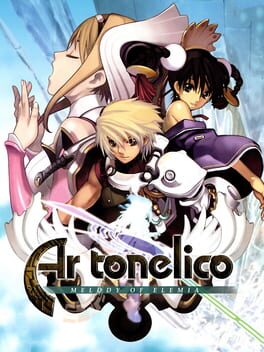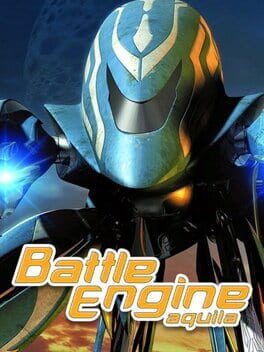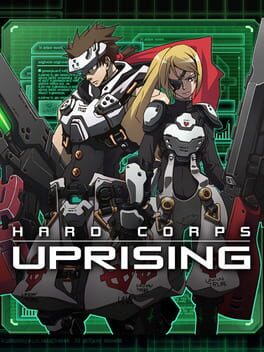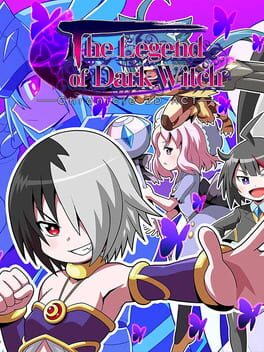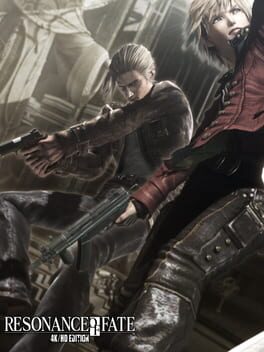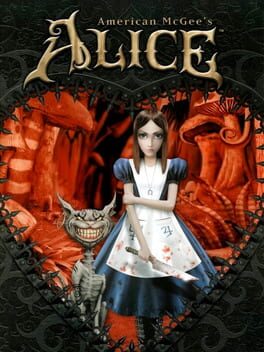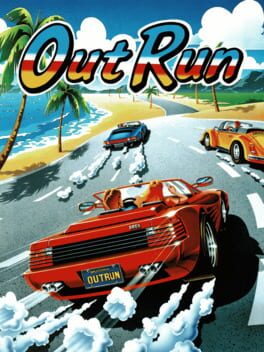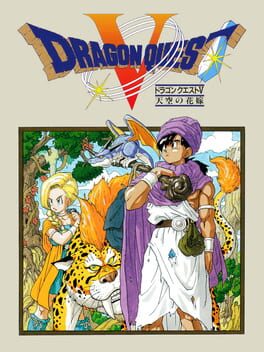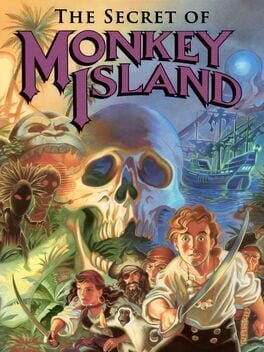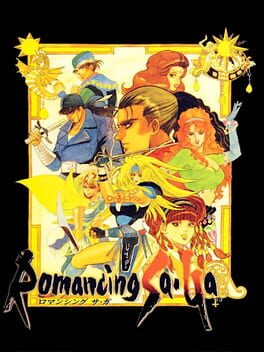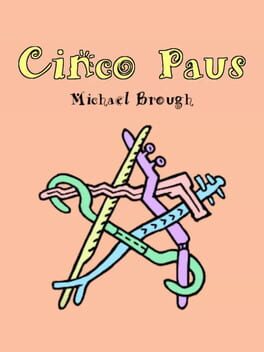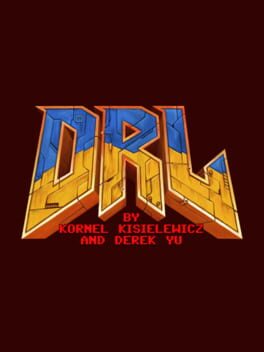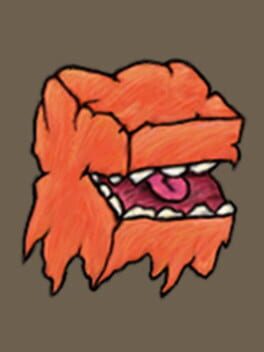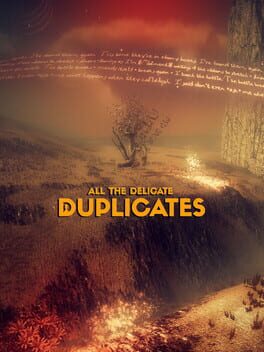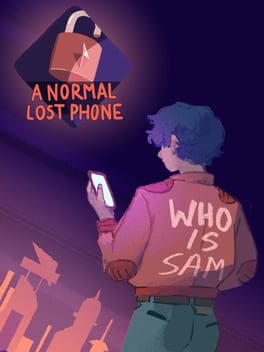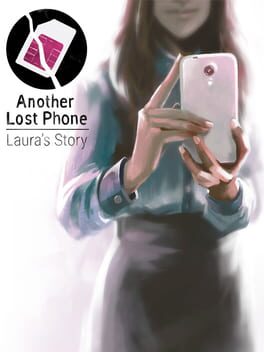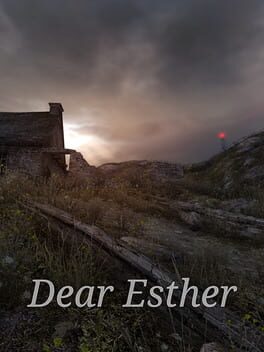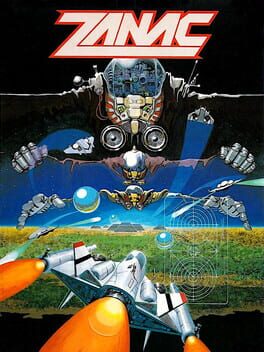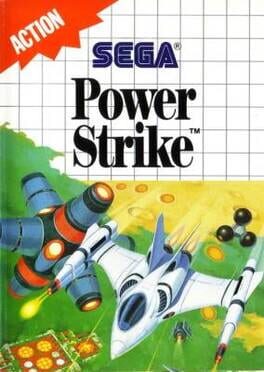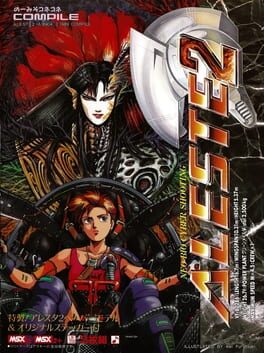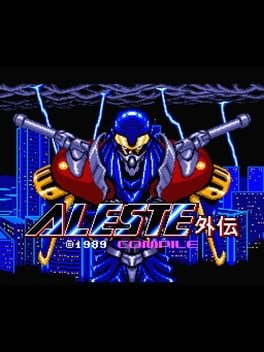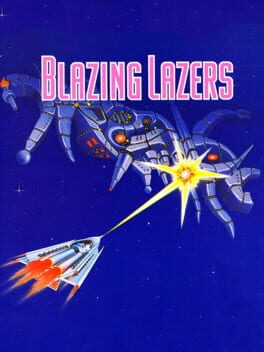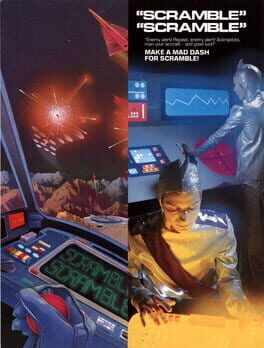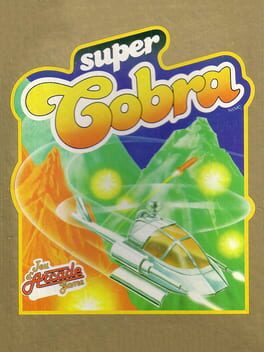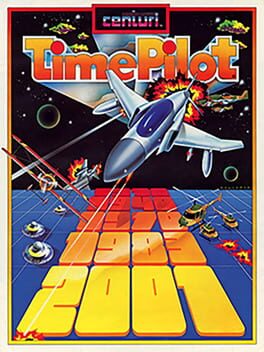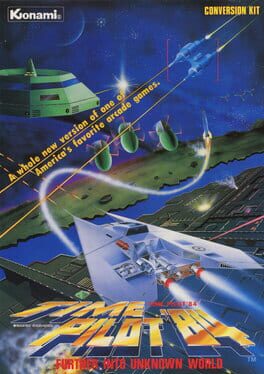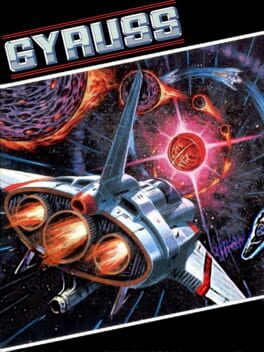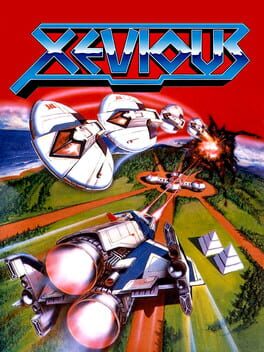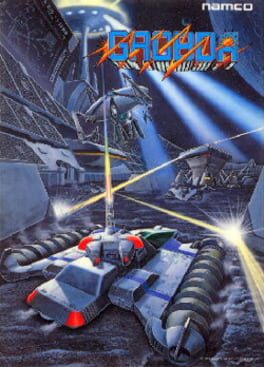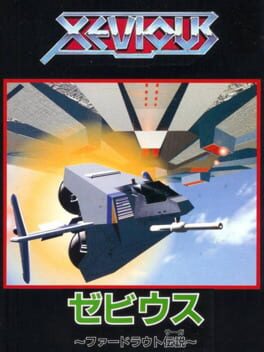bugtechno
189 reviews liked by bugtechno
Cuphead
2017
it feels somewhat rare that an indie game really captures a retro style in a way that does more than pay lip-service to its predecessors. shovel knight was one of those games: a pitch-perfect recreation of NES-style action challenges stripped away of the mechanical uncertainty of the actual games of that era. cuphead captures that for the run-and-gun in a way that makes it not only a loving tribute but a legitimate cornerstone in the genre.
cuphead feels borne by a rigorous design methodology that demonstrates a deep understanding of the fundamentals of boss design in a 2D space. each fight is undergirded by the movement and platform features; this is generally the unifying trait. plenty of fights take place on a featureless flat ground, but very quickly wrinkles such as scrolling, conveyors, limited platforms, or combinations of these are introduced. a great late-game example is the ghost train stage that features of a platform that can and must be moved between left, center, and right using parry controls. these establish for the player the laws of their dominion so to speak: what space can the player leverage? what options exist at any given time to dodge a certain obstacle?
with each phase then comes the primary attack. bosses generally lack dynamic reactive capabilities unlike a human, so they are incapable of mindgames generally speaking. thus, in virtually all boss fights the boss cycles between random attacks that the player must apply a counterstrategy against. in modern games the design parlance is as such: windup animation begets the attack proper begets an opening for a player to either 1) rest if their counterstrategy is not efficient enough to yield a counterattack or 2) counterattack. too unthreatening and the player barely needs to muster a counterattack, and too overpowered and the player will have no time to respond. cuphead weaves in a truly surprising variety of primaries to challenge the player: the enemy may momentarily remove the player's control of the space, such as with the cat at the end of the rat tank fight batting its paws to swat the right and left sides of the screen, or perhaps the enemy creates antagonistic autonomous elements that force the player to utilize their spatial reasoning and pattern recognition to deduce a projectile's movement habits and shift their position accordingly, such as in the bee queen's middle phase where she incorporates stochaistically-drifting geometric projectiles as well as bullets that move in a linear back-and-forth climb on either side of the screen.
primary attacks on their own are only a lock-and-key design principle: find the counterstrategy that works against a particular move and apply it when needed. what creates true tension in the fight are the auxillary attacks. virtually all bosses are able to separately cycle through auxillary attacks that generally involve an entirely separate on-screen entity attacking on their own accord out of sync with the primary opponent. auxillary attacks on their own already heighten the experience by creating a space-constraint intersection that forces the player to adapt their key to more than just a single lock. certain intersections of attacks may prevent successful counterattacks or force the player to fall back on safer strategies, thus making the risk-and-reward judgment more critical and ever mutating. where cuphead really succeeds is having the auxillary attacks cycle as well. it's much like having three basic collared shirts and three basic ties: the combinations they present give you nine outfits, yielding an multiplicative amount of potential attack intersections. phase one of the sea medusa fight is a great example of this: three primary attacks (either summoning ghost projectiles or bringing one of two different fish out of the water with their own projectiles) with three auxillary attacks (staggered puffer fish projectiles, a water jet that forces a positive y velocity, and bombs that explode with a octagonal bullet pattern). each on their own is manageable, but combined there is an additional level of fluidity demanded of the player with adapting on the fly to intersections they may have never seen before.
of course cuphead doesn't simply hew to these elements in every fight; it expands on them and plays with the potential they possess. take the pirate ship fight: this begins with both a small primary attack (pellets fired by the captain one by one) with an auxillary component (a barrel that moves back and forth at the top of the screen, attempting to crush the player when they pass underneath). within time the captain will begin preempting his own pellet attack with a cycle of attacks from different sources, each with their own tell: a shark that consumes the left half of the screen, small bulldog fish(?) that slide across the ground, and a squid that both creates a fountain of bullets and can turn the screen dark if not defeated in time. on its own this is a perfectly interesting fight: manage the primary and auxillary attacks while being cognizant of primary attacks from external components via tells. however, in the second phase, the ship itself begins shooting cannonballs on a timer. at this point the player must not only manage transient attacks from the captain but also track the separate rhythms of the barrel and the ship's cannonballs. these intersect in a truly polyrhythmic fashion that pushes the fight into truly challenging territory that feels immensely rewarding to lock in with.
this is also boosted by cuphead having a stellar kit and smooth controls that feel sharp without being too abrupt or linear. his ability to parry specific objects (which are colored pink to distinguish them) adds a scale of mastery of many bullet patterns, with basic familiarity only yielding the ability to dodge while a complete understanding allows navigation to specific bullets for a parry and the reward of extra super meter. the super meter attacks are all rather useful and feel well balanced, though for the full-meter arts I can't really imagine someone using anything other than invincibility. however, I found myself legitimately switching out his shots and charms for different fights, which is not to say I found all of the variety useful (I mainly stuck to chaser and spread along with the smoke dodge and one extra heart depending on the fight), but to require a level of specificity in strategy for each fight encourages me to experiment more than I may otherwise. there are virtually no points of frustration I can attribute to a failure in the controls or a lack of a specific tool; almost every time I was stumped on a particular counterstrategy I always eventually worked something out even if it wasn't optimal.
I would really go as far as to say I don't think cuphead has any particular failings or even elements of unfair frustration that I can think of. while an immensely challenging experience, the primary and auxillary attacks are synergistic in such a way that a given intersection can't truly render an attack undodgeable or debilitating. never did I feel like a particular portion was just inserted because it felt cool or to fill space; rather, every bit of the game feels handled with care and finesse. the dragon fight was the peak of this for me... that particular fight walled me and put me off the game quite a bit. while the exasperation I felt was valid, I could never pinpoint a particular aspect that really felt unfair to me. at the end of the day, those projectiles that explode into smaller projectiles when hit really preyed on my spray-and-pray instincts in a way that punished me (and many others I assume) far more than most games are willing to muster. if I had to name one little thing that did feel off to me, it was the platforms during the bee queen fight. the scrolling part and random gaps don't bother me, but their collision box doesn't feel quite lined up with the art, which sometimes led to me falling randomly in confusing ways.
I do wish the flying stages had the same level of customization as the ground stages, but understandably that's a scope issue and not something I would expect from a small production. the non-boss levels also feel a bit perfunctory, but they are all still fun and only necessary for collecting coins for purchasing items in the shop. both of these won't get in the way of anyone looking to experience this: the core of the gameplay is still the tremendous boss fights. this has given me a a nice little kick in the pants to go back and dive into the early 16-bit fundamental works that helped mold this into the genius showpiece that it is.
cuphead feels borne by a rigorous design methodology that demonstrates a deep understanding of the fundamentals of boss design in a 2D space. each fight is undergirded by the movement and platform features; this is generally the unifying trait. plenty of fights take place on a featureless flat ground, but very quickly wrinkles such as scrolling, conveyors, limited platforms, or combinations of these are introduced. a great late-game example is the ghost train stage that features of a platform that can and must be moved between left, center, and right using parry controls. these establish for the player the laws of their dominion so to speak: what space can the player leverage? what options exist at any given time to dodge a certain obstacle?
with each phase then comes the primary attack. bosses generally lack dynamic reactive capabilities unlike a human, so they are incapable of mindgames generally speaking. thus, in virtually all boss fights the boss cycles between random attacks that the player must apply a counterstrategy against. in modern games the design parlance is as such: windup animation begets the attack proper begets an opening for a player to either 1) rest if their counterstrategy is not efficient enough to yield a counterattack or 2) counterattack. too unthreatening and the player barely needs to muster a counterattack, and too overpowered and the player will have no time to respond. cuphead weaves in a truly surprising variety of primaries to challenge the player: the enemy may momentarily remove the player's control of the space, such as with the cat at the end of the rat tank fight batting its paws to swat the right and left sides of the screen, or perhaps the enemy creates antagonistic autonomous elements that force the player to utilize their spatial reasoning and pattern recognition to deduce a projectile's movement habits and shift their position accordingly, such as in the bee queen's middle phase where she incorporates stochaistically-drifting geometric projectiles as well as bullets that move in a linear back-and-forth climb on either side of the screen.
primary attacks on their own are only a lock-and-key design principle: find the counterstrategy that works against a particular move and apply it when needed. what creates true tension in the fight are the auxillary attacks. virtually all bosses are able to separately cycle through auxillary attacks that generally involve an entirely separate on-screen entity attacking on their own accord out of sync with the primary opponent. auxillary attacks on their own already heighten the experience by creating a space-constraint intersection that forces the player to adapt their key to more than just a single lock. certain intersections of attacks may prevent successful counterattacks or force the player to fall back on safer strategies, thus making the risk-and-reward judgment more critical and ever mutating. where cuphead really succeeds is having the auxillary attacks cycle as well. it's much like having three basic collared shirts and three basic ties: the combinations they present give you nine outfits, yielding an multiplicative amount of potential attack intersections. phase one of the sea medusa fight is a great example of this: three primary attacks (either summoning ghost projectiles or bringing one of two different fish out of the water with their own projectiles) with three auxillary attacks (staggered puffer fish projectiles, a water jet that forces a positive y velocity, and bombs that explode with a octagonal bullet pattern). each on their own is manageable, but combined there is an additional level of fluidity demanded of the player with adapting on the fly to intersections they may have never seen before.
of course cuphead doesn't simply hew to these elements in every fight; it expands on them and plays with the potential they possess. take the pirate ship fight: this begins with both a small primary attack (pellets fired by the captain one by one) with an auxillary component (a barrel that moves back and forth at the top of the screen, attempting to crush the player when they pass underneath). within time the captain will begin preempting his own pellet attack with a cycle of attacks from different sources, each with their own tell: a shark that consumes the left half of the screen, small bulldog fish(?) that slide across the ground, and a squid that both creates a fountain of bullets and can turn the screen dark if not defeated in time. on its own this is a perfectly interesting fight: manage the primary and auxillary attacks while being cognizant of primary attacks from external components via tells. however, in the second phase, the ship itself begins shooting cannonballs on a timer. at this point the player must not only manage transient attacks from the captain but also track the separate rhythms of the barrel and the ship's cannonballs. these intersect in a truly polyrhythmic fashion that pushes the fight into truly challenging territory that feels immensely rewarding to lock in with.
this is also boosted by cuphead having a stellar kit and smooth controls that feel sharp without being too abrupt or linear. his ability to parry specific objects (which are colored pink to distinguish them) adds a scale of mastery of many bullet patterns, with basic familiarity only yielding the ability to dodge while a complete understanding allows navigation to specific bullets for a parry and the reward of extra super meter. the super meter attacks are all rather useful and feel well balanced, though for the full-meter arts I can't really imagine someone using anything other than invincibility. however, I found myself legitimately switching out his shots and charms for different fights, which is not to say I found all of the variety useful (I mainly stuck to chaser and spread along with the smoke dodge and one extra heart depending on the fight), but to require a level of specificity in strategy for each fight encourages me to experiment more than I may otherwise. there are virtually no points of frustration I can attribute to a failure in the controls or a lack of a specific tool; almost every time I was stumped on a particular counterstrategy I always eventually worked something out even if it wasn't optimal.
I would really go as far as to say I don't think cuphead has any particular failings or even elements of unfair frustration that I can think of. while an immensely challenging experience, the primary and auxillary attacks are synergistic in such a way that a given intersection can't truly render an attack undodgeable or debilitating. never did I feel like a particular portion was just inserted because it felt cool or to fill space; rather, every bit of the game feels handled with care and finesse. the dragon fight was the peak of this for me... that particular fight walled me and put me off the game quite a bit. while the exasperation I felt was valid, I could never pinpoint a particular aspect that really felt unfair to me. at the end of the day, those projectiles that explode into smaller projectiles when hit really preyed on my spray-and-pray instincts in a way that punished me (and many others I assume) far more than most games are willing to muster. if I had to name one little thing that did feel off to me, it was the platforms during the bee queen fight. the scrolling part and random gaps don't bother me, but their collision box doesn't feel quite lined up with the art, which sometimes led to me falling randomly in confusing ways.
I do wish the flying stages had the same level of customization as the ground stages, but understandably that's a scope issue and not something I would expect from a small production. the non-boss levels also feel a bit perfunctory, but they are all still fun and only necessary for collecting coins for purchasing items in the shop. both of these won't get in the way of anyone looking to experience this: the core of the gameplay is still the tremendous boss fights. this has given me a a nice little kick in the pants to go back and dive into the early 16-bit fundamental works that helped mold this into the genius showpiece that it is.
Intercontinental
2017
20 Small Mazes
2024
The Exit 8
2023
A meticulous on-going negotiation between space, architecture, self-doubt, and the rigidity of systems real and imagined.
Go buy and play it. Equip your horse blinders because the store page sours things a bit.
ここでは
左側通行
⬅
Perfect tectonic representation of Japanese underground passageways afforded by advances in games graphics. The hyperreal supplants the original to the extent that, as in reality, it becomes visual noise, consumed without deliberate thought. Without knowing what The Exit 8 delivers, its call to pay attention to surroundings becomes an act of questioning minutiae and the necessary bounds of the game space. In quietly becoming familiar with the space itself, differences should become apparent, but the mind effectively second-guesses itself amid a sea of static. Occasionally it is blatant, more often fleeting as a wandering eye spot, impossible to catch within one's focus and definitively claim it to be actual.
Of course, if it really was that subtle it wouldn't be a very rewarding experience, but the learning experience is reinforced by the dread of seeing 0, an affirmation that you missed something or, more terrifyingly, misremembered something. Were the posters always in that configuration? Did the passerby look like that? How grungy was it last time?
By not repeating itself until the bag of tricks runs empty, The Exit 8 refuses to even give the player the opportunity to enter routine, to become acquainted with the unfamiliar. Even the security of 8 not a perfect shield until the assurance of leaving it behind.
Go buy and play it. Equip your horse blinders because the store page sours things a bit.
ここでは
左側通行
⬅
Perfect tectonic representation of Japanese underground passageways afforded by advances in games graphics. The hyperreal supplants the original to the extent that, as in reality, it becomes visual noise, consumed without deliberate thought. Without knowing what The Exit 8 delivers, its call to pay attention to surroundings becomes an act of questioning minutiae and the necessary bounds of the game space. In quietly becoming familiar with the space itself, differences should become apparent, but the mind effectively second-guesses itself amid a sea of static. Occasionally it is blatant, more often fleeting as a wandering eye spot, impossible to catch within one's focus and definitively claim it to be actual.
Of course, if it really was that subtle it wouldn't be a very rewarding experience, but the learning experience is reinforced by the dread of seeing 0, an affirmation that you missed something or, more terrifyingly, misremembered something. Were the posters always in that configuration? Did the passerby look like that? How grungy was it last time?
By not repeating itself until the bag of tricks runs empty, The Exit 8 refuses to even give the player the opportunity to enter routine, to become acquainted with the unfamiliar. Even the security of 8 not a perfect shield until the assurance of leaving it behind.
Vampire Survivors
2021
not morally egregious per se but rather a depressing culmination of a decade's worth of design trickery and (d)evolving cultural/social tastes and otherwise exists as insipid twitchcore autoplaying bullshit that should come with a contractual agreement binding its devotees to never speak prejudicially about mobile games or musou ever again lest they face legally enforced financial restitution. just play nex machina man. or watch NFL. been a fun season for that. fuck the review man let's talk sports in the comments
Pseudoregalia
2023
Love the way you can push your movement to overcome the obstacles here, which was probably the reason I got so thoroughly lost and had to restart a couple of times- rarely outright denied from exploring an area and forced to turn around by some explicit check. Those couple of attempts also diverged in a really wonderful way, equipped with a slightly different moveset that dramatically recontextualized some of the early-game challenges and showed the robustness of the fundamentals here. As gratifying as the full kit is to work with, I’m really curious to see how much here is possible with a paired down moveset (In retrospect, I kind of relish how cluelessly I was able to push through some of the areas!)
Was left wishing more had been done with its dreamworld imagery (the sight of some floating furniture got me unreasonably excited for an area akin to Thief's “The Sword”) but the layers of the castle, from its stained-glass skies to the fleshy halls of the underbelly make for an evocative playspace: enough binding to give everything some catharsis. Final fight also ends up being a great capstone to the whole thing, marrying the combat and movement in a suitably climactic way. Thought the healing upgrades were a little unnecessary at first, but the fight has more than enough teeth to vindicate finding a few of them; same goes for nuances like being able to reflect projectiles and bouncing off enemies when you attack them, moves that felt like nice additions suddenly given new meaning in its last moments.
Easy recommendation from me. Perfect game to play in the twilight haze of the Summer.
Was left wishing more had been done with its dreamworld imagery (the sight of some floating furniture got me unreasonably excited for an area akin to Thief's “The Sword”) but the layers of the castle, from its stained-glass skies to the fleshy halls of the underbelly make for an evocative playspace: enough binding to give everything some catharsis. Final fight also ends up being a great capstone to the whole thing, marrying the combat and movement in a suitably climactic way. Thought the healing upgrades were a little unnecessary at first, but the fight has more than enough teeth to vindicate finding a few of them; same goes for nuances like being able to reflect projectiles and bouncing off enemies when you attack them, moves that felt like nice additions suddenly given new meaning in its last moments.
Easy recommendation from me. Perfect game to play in the twilight haze of the Summer.
Elden Ring
2022
This review contains spoilers
is born from god is born from nature is born from man is born from god is born from nature is born from man is born from god is born from nature is born from man is born from god is born from nature is born from man is born from god is born from nature is born from man is born from god is born from nature is born from man is born from god is born from nature is born from man is born from god is born from nature is born from man is born from god is born from nature is born from man is born from god is born from nature is born from man is born from god is born from nature is born from man is born from god is born from nature is born from man is born from god is born from nature is born from man is born from god is born from nature is born from
i got tricked into playing dark souls 3 again.
i got tricked into playing dark souls 3 again.
Scorn
2022
Super Mario 64
1996
Soundbox Companion
Ok you can so what you want about this being another dumb Nintendo game or just a shitty outdated platformer or a childrens game or whatever but let me speak my truth here.
Teaching somebody the 16 star speedrun at my dingy home would unironically be more intimate than the most depraved sexual fantasies I could think of. Teaching somebody how to BLJ would be so hot, I would kiss their feet after they succeeded at it.
This is not a joke, if you haven't tasted the speedrunning world of this game you're missing out on a huge part of its appeal. If you're a really close lady friend of mine I would show you how to do it no questions asked. I been thinking this in the back of my head for over a month now. It will probably be a genuine part of my dating life going forward and I'm not sorry for that in fact the reason I'm even saying this is to make room for the fact other people might also feel like that. It also has the best sound design I've ever heard in my entire life. They gave the pirahna plant a lullaby theme song that you activate by stepping into its aura. This is an incredibly experimental sound design decision that you dont see in contemporary gaming. They would try to imitate this lullaby effect 10 years later with Galaxy via a cutscene transition into Rosalina reading a book for to the lunas but because of the diversion in interactivity, it left Rosalina feeling like a maternalistic overlord. In this way I would argue a lot of contemporary game design is extremely parental, its having an event happen towards you that you have to accept. The pirahna plant lullaby is spontaneous and you only have to accept it as long as you are within the boundaries of that space, you can leave it whenever you're tired of it. I think there's a genuine romance in the design of SM64 that's worth exploring, but it cant be done by me alone.
Ok you can so what you want about this being another dumb Nintendo game or just a shitty outdated platformer or a childrens game or whatever but let me speak my truth here.
Teaching somebody the 16 star speedrun at my dingy home would unironically be more intimate than the most depraved sexual fantasies I could think of. Teaching somebody how to BLJ would be so hot, I would kiss their feet after they succeeded at it.
This is not a joke, if you haven't tasted the speedrunning world of this game you're missing out on a huge part of its appeal. If you're a really close lady friend of mine I would show you how to do it no questions asked. I been thinking this in the back of my head for over a month now. It will probably be a genuine part of my dating life going forward and I'm not sorry for that in fact the reason I'm even saying this is to make room for the fact other people might also feel like that. It also has the best sound design I've ever heard in my entire life. They gave the pirahna plant a lullaby theme song that you activate by stepping into its aura. This is an incredibly experimental sound design decision that you dont see in contemporary gaming. They would try to imitate this lullaby effect 10 years later with Galaxy via a cutscene transition into Rosalina reading a book for to the lunas but because of the diversion in interactivity, it left Rosalina feeling like a maternalistic overlord. In this way I would argue a lot of contemporary game design is extremely parental, its having an event happen towards you that you have to accept. The pirahna plant lullaby is spontaneous and you only have to accept it as long as you are within the boundaries of that space, you can leave it whenever you're tired of it. I think there's a genuine romance in the design of SM64 that's worth exploring, but it cant be done by me alone.
Basilisk 2000
2023
Oh, yeah. This is my shit.
Spoilers below, but the plot running through this one goes deep. Even with spoilers, you probably won’t understand much until after you’ve played it and discussed it with others. The store pages for this encourage you to join a Discord server if you have any aspirations of finding everything, and you’re seriously going to need the help.
Basilisk 2000 is one of few immensely cool titles that gets to carve out a niche for itself by taking a meta element of a game and expanding it into a full experience. See, the Basilisk 2000 that we play is really nothing more than another constructed layer above the Basilisk 2000 that exists within the game’s universe.
I told you this was gonna get complicated.
The actual game is a horror puzzler about digging through the files of Basilisk 2000. To be more specific, it’s done through the level editor; the entire game is experienced through developer tools and preview windows, with lists of objects and NPCs cascading down alongside music controls and command line prompts.
You can escape noclip and enter Walk Mode to play the game-within-a-game as intended, but Basilisk 2000 was never finished. A horrific tragedy struck the developers, and it’s one that keeps getting foreshadowed over and over again as you work your way through the levels. Someone — or something — has added extra content into Basilisk 2000.
There are levels that were clearly intended to be included in the in-universe release of the game, such as the starting town of HAVENWOOD, and the CROSSROADS, and OFFICE. Others, such as WITHINIT, OFFICE_2000, and one which I won’t dare to name here seem as though they’ve been shuffled in with the others, and were never actually meant to be found by anyone.
There’s something eldritch here; it’s in the act of poking through all of these hints, looking for knowledge that you shouldn’t know, sights you shouldn’t see. The dread will start building the second you find your first corpse hidden in an otherwise pleasant part of the world, and there’s virtually no catharsis to be found by reaching what might be the end. It might not. Who knows?
Your main means of progressing through the game is by entering a level and combing over every piece of geometry you can as meticulously as you can bear. NPCs will mostly offer flavor text, and doors and other transition points will either lead nowhere or send you back to the origin of the area you’re in.
It can be tempting to abuse the powers that are given to you, but this is only going to result in you getting stuck; the list of local entities isn’t actually as all-encompassing as its existence would imply, and there are many objects hidden out of bounds or in far off corners that are exempt from the list. These characters and objects also usually hold the keys to finding another piece of progression, making it a requirement to be thorough. The atmosphere is often thick enough that this isn’t a tedious act, and digging through the world in search of secrets is engaging and creepy in equal measure.
It’s not perfect. There’s one jumpscare that’s a lot more silly than it is frightening, and anachronistic FMV clips of David Lynch inexplicably make two separate appearances. That said, what’s good here vastly outweighs the bad. The entire aura of the game is heavy and oppressive, and it makes some of the payoffs really connect. The segment that I dared not name was genuinely so tense that I had to turn the game off on my first time through it, and I only managed to see the end by leaning way back in my chair and going as fast as I possibly could. It’s some really solid horror. KIRA’s a talented creator, and their work here is impressive and creative.
Making a hostile, oppressive bit of horror that shoots vaguely in the direction of “haunted game” without being embarrassing is a feat. Basilisk 2000 should be celebrated for that alone.
Spoilers below, but the plot running through this one goes deep. Even with spoilers, you probably won’t understand much until after you’ve played it and discussed it with others. The store pages for this encourage you to join a Discord server if you have any aspirations of finding everything, and you’re seriously going to need the help.
Basilisk 2000 is one of few immensely cool titles that gets to carve out a niche for itself by taking a meta element of a game and expanding it into a full experience. See, the Basilisk 2000 that we play is really nothing more than another constructed layer above the Basilisk 2000 that exists within the game’s universe.
I told you this was gonna get complicated.
The actual game is a horror puzzler about digging through the files of Basilisk 2000. To be more specific, it’s done through the level editor; the entire game is experienced through developer tools and preview windows, with lists of objects and NPCs cascading down alongside music controls and command line prompts.
You can escape noclip and enter Walk Mode to play the game-within-a-game as intended, but Basilisk 2000 was never finished. A horrific tragedy struck the developers, and it’s one that keeps getting foreshadowed over and over again as you work your way through the levels. Someone — or something — has added extra content into Basilisk 2000.
There are levels that were clearly intended to be included in the in-universe release of the game, such as the starting town of HAVENWOOD, and the CROSSROADS, and OFFICE. Others, such as WITHINIT, OFFICE_2000, and one which I won’t dare to name here seem as though they’ve been shuffled in with the others, and were never actually meant to be found by anyone.
There’s something eldritch here; it’s in the act of poking through all of these hints, looking for knowledge that you shouldn’t know, sights you shouldn’t see. The dread will start building the second you find your first corpse hidden in an otherwise pleasant part of the world, and there’s virtually no catharsis to be found by reaching what might be the end. It might not. Who knows?
Your main means of progressing through the game is by entering a level and combing over every piece of geometry you can as meticulously as you can bear. NPCs will mostly offer flavor text, and doors and other transition points will either lead nowhere or send you back to the origin of the area you’re in.
It can be tempting to abuse the powers that are given to you, but this is only going to result in you getting stuck; the list of local entities isn’t actually as all-encompassing as its existence would imply, and there are many objects hidden out of bounds or in far off corners that are exempt from the list. These characters and objects also usually hold the keys to finding another piece of progression, making it a requirement to be thorough. The atmosphere is often thick enough that this isn’t a tedious act, and digging through the world in search of secrets is engaging and creepy in equal measure.
It’s not perfect. There’s one jumpscare that’s a lot more silly than it is frightening, and anachronistic FMV clips of David Lynch inexplicably make two separate appearances. That said, what’s good here vastly outweighs the bad. The entire aura of the game is heavy and oppressive, and it makes some of the payoffs really connect. The segment that I dared not name was genuinely so tense that I had to turn the game off on my first time through it, and I only managed to see the end by leaning way back in my chair and going as fast as I possibly could. It’s some really solid horror. KIRA’s a talented creator, and their work here is impressive and creative.
Making a hostile, oppressive bit of horror that shoots vaguely in the direction of “haunted game” without being embarrassing is a feat. Basilisk 2000 should be celebrated for that alone.
12 lists liked by bugtechno
